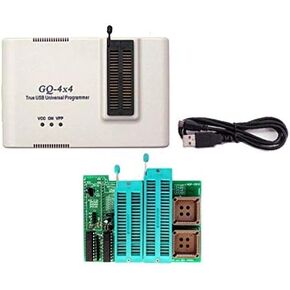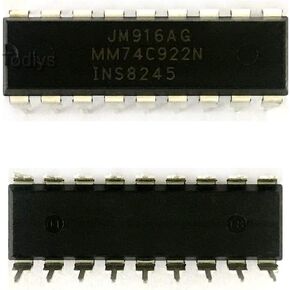- Shopping, made easy.
- /
- Get the app!
Supply voltage: 8-35V
Logic voltage: 5-12V
Reference voltage: 5.5V
Output on-resistance: 320-430M ohms per driver
Diode forward voltage: 1.2V per driver
Driver output current: ±2A
Size: 6.8X5.2CM
For A rduino interface is fully compatible with the extension. and communication through 2c and address can be modified. It can take two motors with direct WM drive output. Up to four DC brush motors or two four-wire stepper motors can be connected. Using TB6612FNG motor driver chip, 1.2A drive capability, 3.2A peak,peak L298N module. We now have the TB6612 MOSFET driver: 1.2A and 3A peak current per channel. it also has a lower motor voltage drop, so more torque can be obtained from the battery. Instead of using latches and for Arduinos PWM pins, we have a fully dedicated pWM driver on the chip. The chip handles all the motor and speed control on the 2C. Only two pins (SDA and SCL) are needed to drive multiple motors. Stackable design.
 Bridgold 10pcs FQP30N06L FQP30N06 30N06 30N06L N-Channel MOSFET Transistor 32 A/60 V,3-Pin TO-220
KWD 4
Bridgold 10pcs FQP30N06L FQP30N06 30N06 30N06L N-Channel MOSFET Transistor 32 A/60 V,3-Pin TO-220
KWD 4
 GQ PRG-112 True USB Willem Brand GQ-4X V4 (GQ-4X4) USB Universal 40 pin Programmer + 16 bit EPROM Adapter 28F102 27C400 27C800 27C160 27C322 27C1024 27C2048 27C4096 27c4002 M27C322 Programmer
KWD 48.500
GQ PRG-112 True USB Willem Brand GQ-4X V4 (GQ-4X4) USB Universal 40 pin Programmer + 16 bit EPROM Adapter 28F102 27C400 27C800 27C160 27C322 27C1024 27C2048 27C4096 27c4002 M27C322 Programmer
KWD 48.500
 Bridgold 20pcs(10pcs 2N5457+10pcs 2N5458) N−Channel General Purpose JFETs Transistors,TO-92.
KWD 4
Bridgold 20pcs(10pcs 2N5457+10pcs 2N5458) N−Channel General Purpose JFETs Transistors,TO-92.
KWD 4
 Todiys New 10Pcs for 74C922 74C922N MM74C922N DIP-18 16-Key Encoder IC Chip MM74C922
KWD 5.500
Todiys New 10Pcs for 74C922 74C922N MM74C922N DIP-18 16-Key Encoder IC Chip MM74C922
KWD 5.500